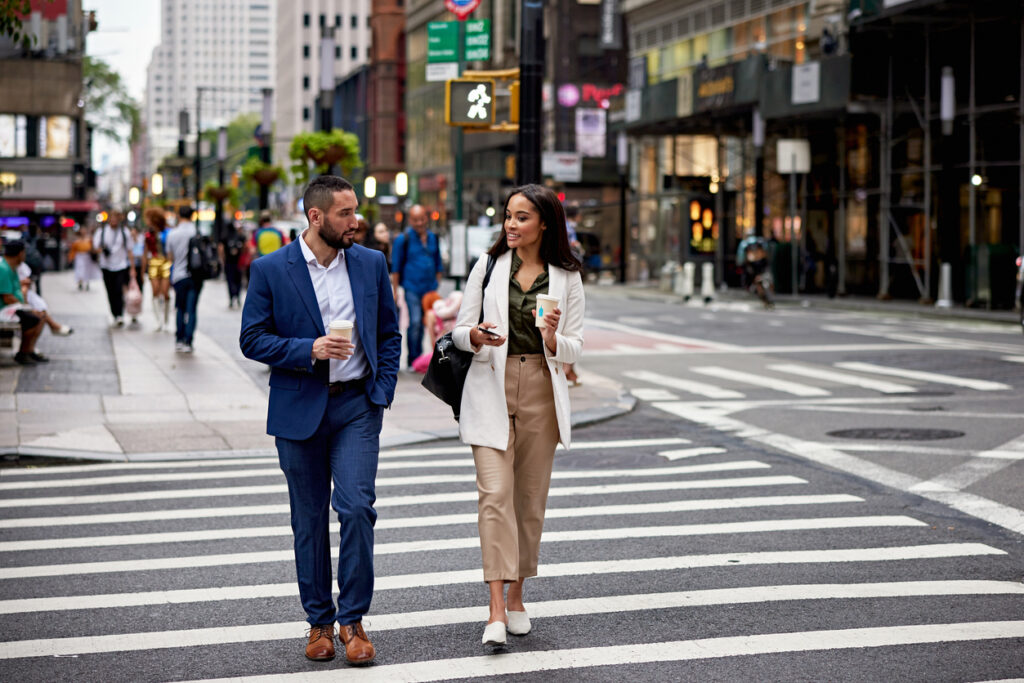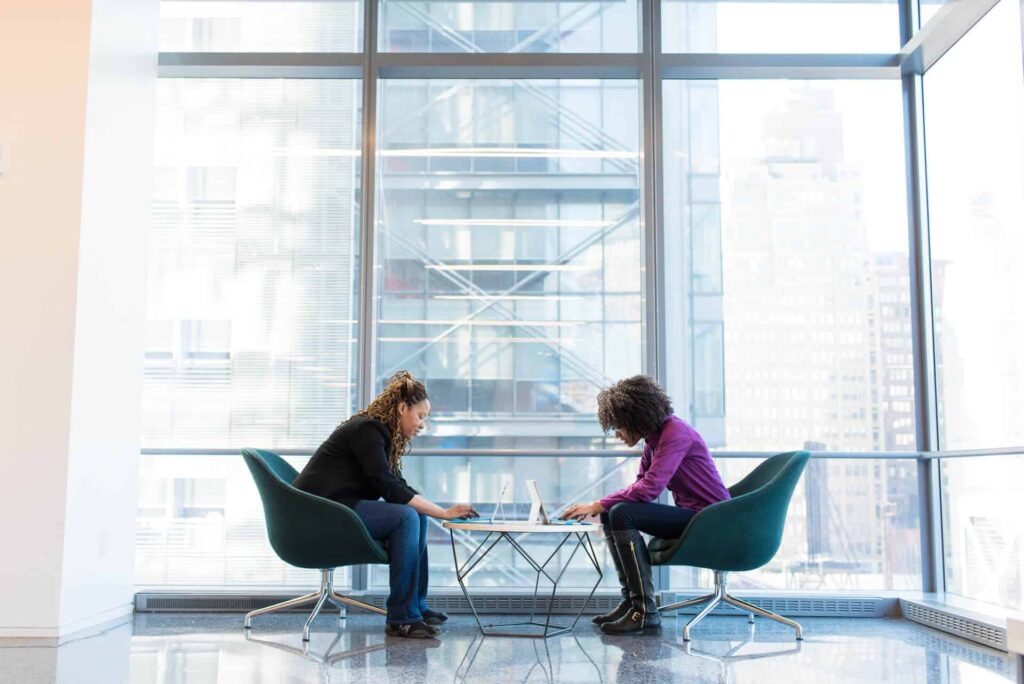The Future of Design: Not What is the Workplace But Who is the Worker?
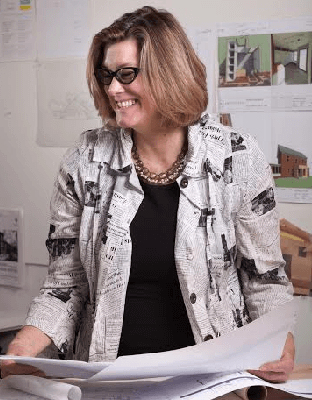
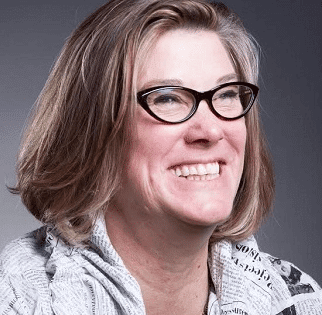 A recognized expert in the workplace design and strategy, Kay Sargent has more than 30 years of experience helping companies optimize their global real estate portfolios and create innovative work environments. As Senior Principal and Director of Strategic Global Accounts at HOK, Kay works with the workplace team, the offices and the lines of businesses to service their clients and ensure they are bringing the best resources the firm and the industry have to them.
A recognized expert in the workplace design and strategy, Kay Sargent has more than 30 years of experience helping companies optimize their global real estate portfolios and create innovative work environments. As Senior Principal and Director of Strategic Global Accounts at HOK, Kay works with the workplace team, the offices and the lines of businesses to service their clients and ensure they are bringing the best resources the firm and the industry have to them.
So the obvious first question was how did Kay how began her journey into interior design.
KS: Ever since I was 10 I’ve always drawn house plans and designed spaces and have been really interested in space and architecture and design. And when I was in high school they had a drafting class that I took. I ended up being the only girl in the entire drafting class but I absolutely loved it and that really gave me my first introduction. This was when drafting actually happened on a drafting table with a T-square. It was truly an art and I loved it – that kind of got me hooked. But at that time I didn’t really know interior design was a profession and I didn’t want to go into architecture because I didn’t like math – the ironic thing is that to this day I am the one that does all the mathematical equations and analysis. When I went to college, I went to art school and discovered interior design as a profession. I’ve always kind of been more on the technical side so I decided that’s what I want to do.
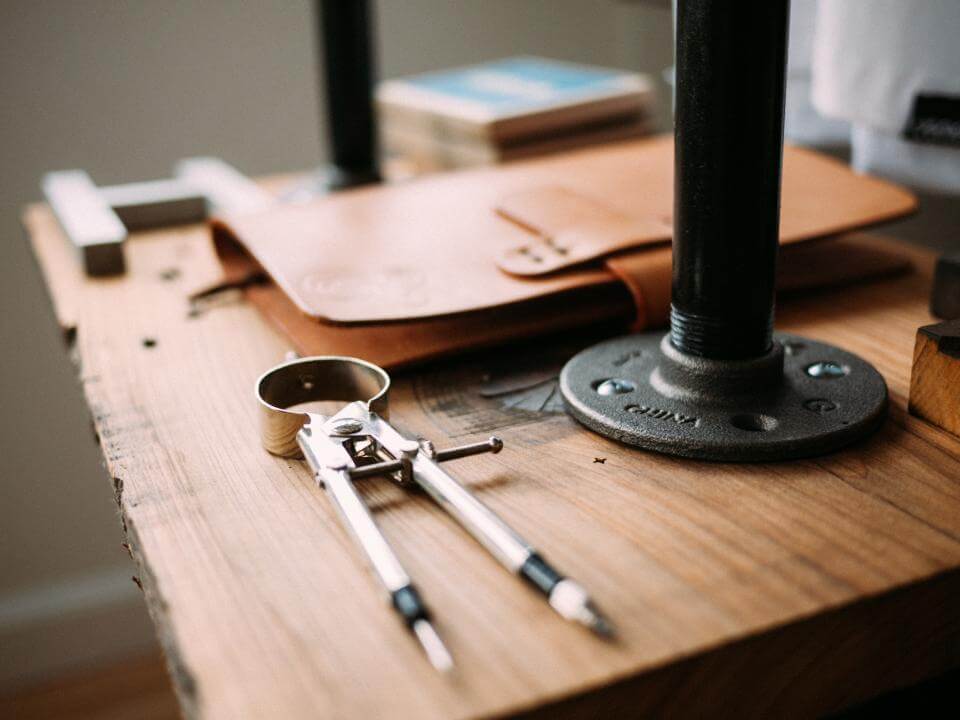 Kay has a design degree from Virginia Commonwealth University and has studied environmental design at Parsons School of Design in New York. We asked Kay to tell us about her first steps into the professional world of design.
Kay has a design degree from Virginia Commonwealth University and has studied environmental design at Parsons School of Design in New York. We asked Kay to tell us about her first steps into the professional world of design.
KS: I worked part-time during college in a furniture dealer. At that point, we still didn’t have computers in school or even in most firms, it was all hand drafting, ink on mylar, but because I had exposure to working on CADD at the furniture dealership, when I left college I started the first CADD department in Washington, DC. But after about a year I realized if I kept using the computer I was going to be relegated to the CADD department forever, because 30 years ago everything was very segregated.
I left my first job after a year, took my second job and pretended I didn’t know how to use a computer because I didn’t want to be in the CADD department for the rest of my life. It’s kind of ironic because I don’t do CADD or BIM today, but there is plenty of talented people around me that do. But I actually started in the technology realm.
Over her career, Kay has specialized in various specialties in the design world – from security design, ADA Assessments, to master planning. Kay says she has always been a student of design and business and it is her ongoing curiosity that led her to focus on workplace strategy.
KS: I am always looking to learn, apply and get better. So when you have that philosophy you start thinking about how can I do this better? What does this mean? What can I learn from this? and that really ebbs and flows into workplace strategy. Our job is to have a deeper understanding of the clients needs and how to solve their problems by asking the why question. Why are doing this? How can we make it better? And what’s the purpose behind it? That’s really how I started focusing more and more on the workplace. I think in the last several years the rate of change is just so fast that we really need to be forward thinking to stay on top of everything that’s happening and I think it’s a really interesting and challenging time. I love pushing boundaries and it’s all about being smarter and being better.
Considering the rapid advances in technology and generational differences in working styles, we asked Kay how can organizations best plan for workspaces that will last more than ten years out – or if that is even possible in today’s changing design landscape.
KS: Yes, but you have to design in agility. And quite frankly, organizations need to fully embrace the fact that 20 years ago you might have designed a space once and let it sit for ten years. If you do that today the space will be irrelevant pretty quickly. The speed of change is so fast and evolution is so quick that we need to embed flexibility. We need to create spaces that are agile and we need to be willing to go back and to continually assess and determine what’s new with technology, in the business world, with the sharing economy, and evolving demographics that is going to impact our workplace and then you have to be willing to adjust and tweak to accommodate those shifts.
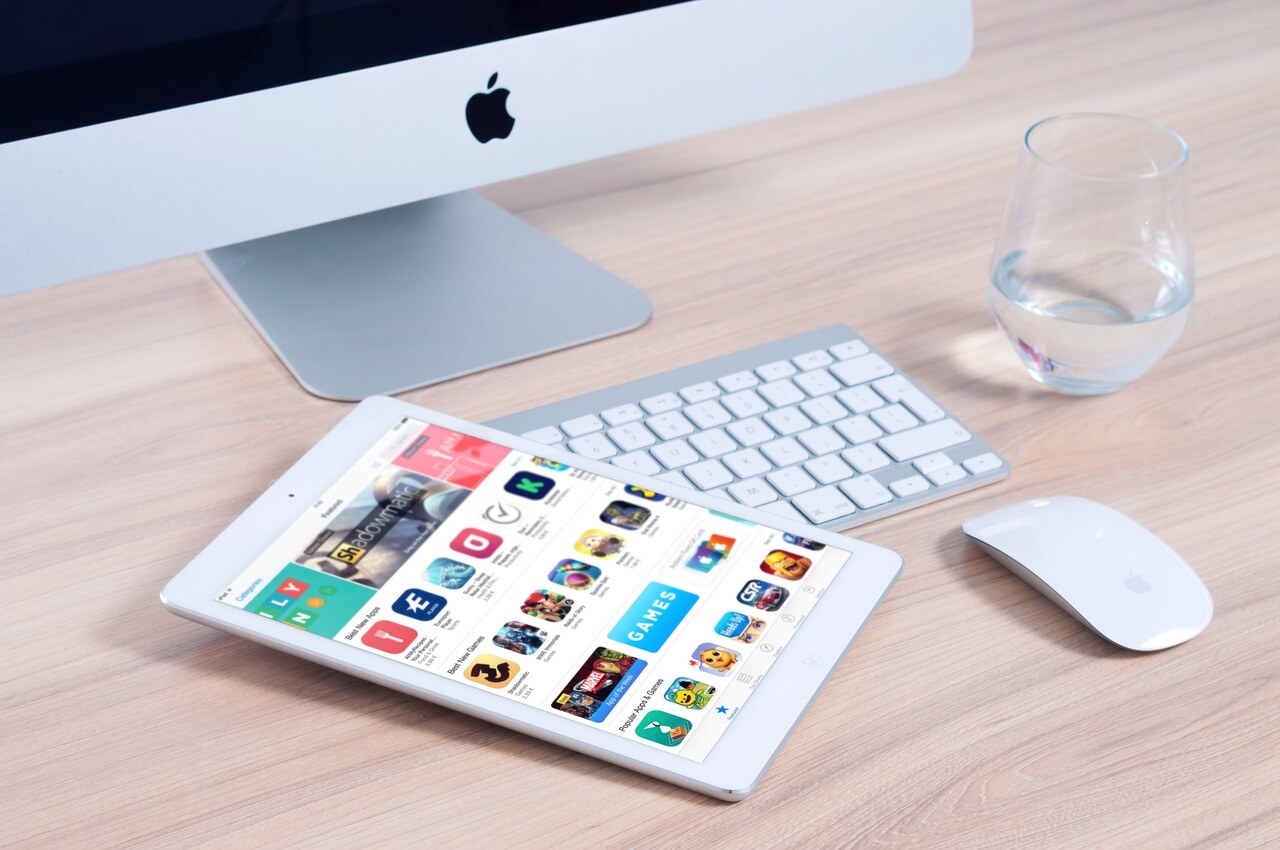
Kay tells us how the ‘one and done’ every ten years design philosophy won’t cut it today. Rather we need a whole different approach to how we design and manage our space.
KS: It is a different mindset that the corporate real estate, facility managers, and companies need to have about the willingness to keep their space fresh. I’ll give you an example, can you imagine if an IT guy came in and said ‘here is your phone, good luck, see you in ten years.’ You’d laugh! There are going to be ten different versions of this phone that’s going to come out in the next several years. Well, in a sense that is what is happening with how we work as well. The traditional real estate model of, ‘here is your space, good luck, see you in ten years.’ That doesn’t work anymore and I don’t think most companies have fully embraced that yet.
We asked Kay what technology and design considerations she believes are most important to create an agile work environment. How can companies best accommodate the flexible workplace today?
KS: I think there is going to be a real change in the next ten years and I think the change is going to be with the Internet of Things (IoT), beacon technology and sensors. If you think about it, the car industry is a good example of what we should be striving for. You have a key for certain cars that you can put into the door and it automatically knows ‘okay, this is Kay and she likes this radio station, this temperature and her seat in this position’ and it automatically adjusts to me. it is cognitively and intuitively engineered to adjust to my preferences and to conform to my needs.
In the workplace, we are still crawling under desks trying to find power. I heard the other day that there are seven sensors for every one person on the planet right now.
Beacon technology, sensor technology, occupancy technology, they can really give us much better information and data about how to use space, how to design space and how to adjust the space. For the temperature, lighting, air, music, for all of this is there – we just need to leverage that a little bit more. I think that’s why you are really going to see in the next five to ten years.
The other major change Kay sees on the horizon is a new standard for accessible public technology.
KS: It’s kind of archaic if you think about how much technology we are all lugging around every time we go someplace. If you think about it, everywhere you go you need to sit but we aren’t all carrying a chair around, right? Chairs are just omnipresent, the are where you need them and just standard equipment. So why are we lugging all these technologies around that quite frankly should just become standard equipment? And if we are storing things in the cloud then we should be able to have a card or a swipe that we can walk up to any monitor, any screen, any work surface, anything anywhere, swipe it and all of a sudden our information is brought up. We are going to look back and laugh at the fact that we are lugging these big heavy laptops around with power cords trailing behind us.
We asked Kay what major trends she is seeing in workplace design and if she had advice for FMs to watch out for.
KS: I think today the biggest trend that we are seeing is variety, choice and giving people options. We are trying to deal with such a wide variety of people – ethnically, gender and age groups. We are dealing with different workstyles, and with introverts, extroverts. I think that today we are getting to a point where it’s about hiring smart people, empowering them and giving them options and choices and letting them do what they do best. One size kind of misfits all – it’s about creating a balance between quiet spaces and collaborative areas.
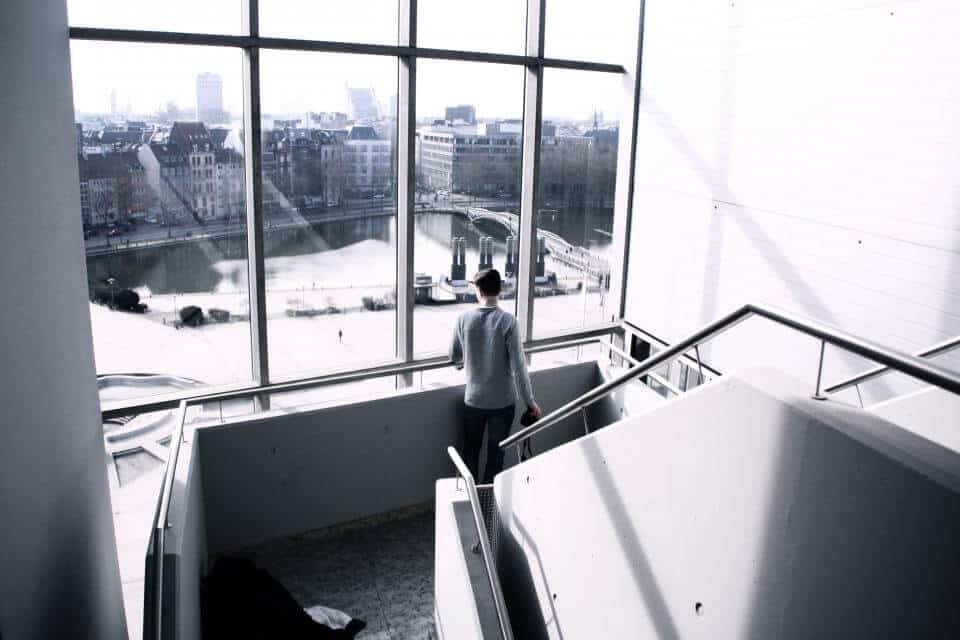 What do organizations need to stop doing? Step back from their focus on the cost of real estate and realize the bigger expense – the cost of human capital.
What do organizations need to stop doing? Step back from their focus on the cost of real estate and realize the bigger expense – the cost of human capital.
KS: A huge shift needs to happen. Everybody is so focused on the cost of real estate but in all honesty, real estate is cheap compared to people. Companies typically spend about 80% of their money on employees, human capital, about 10% on technology and about 10% on their real estate. If you mess up that 80% by designing spaces where people aren’t as productive, efficient, happy, comfortable or engaged – you will negatively impact the bottom line far more than whatever you might have saved by squeezing them into less space. So we really need to start thinking about employee engagement and human-centric design that allows people to function at a higher level.
We are so stressed out today the World Health Organization says that ‘technostress’ is going to be the biggest challenge going forward because we are living in a world where we are 24/7, we can never turn it off. Stress is really going to become a factor not only in regard to how we function but how we design workplaces.
The question Kay gets asked the most is what is the workplace of the future – but she tells us the better question is who is the worker of the future.
KS: If you don’t know who you are planning for and if we all agree that we are ultimately designing space for people then you need to understand the workforce you are planning for. The Gen Z’s are right behind the millennials and they are coming into the workplace in the next five years. The oldest Gen Z is about 15 now. We need to let the millennials develop their legacy and stop having them under this microscope. We need to also start broadening our horizons and say ‘okay, what’s the next group and what are their issues?’. And we need to acknowledge that it’s about ALL people, not just one group.
The Gen Z’s are truly the first digital natives. They are the ones that have had technology since birth but they are also the ones who are the most overwhelmed by it. The overstimulated environments that are meant to attract people and motivate them to stay there for long hours, are stressful and burning people out. The younger generation, is overwhelmed with the barrage of data that they are getting on their phone. They don’t need any more stimulation. In fact, we have the highest rate of teen depression that we’ve ever had.
To overcome this challenge, Kay says that we need to find ways to create balance, to create some order and to create clarity.
KS: No one can function at a high level if their basic needs aren’t met. If you are too hot or too cold, too stressed out, don’t feel safe, don’t like where they are sitting or feel exposed, feel vulnerable, can’t concentrate, or are too distracted – you aren’t going to be a high performer typically. What is more important than your generational traits, is the type of work people are doing. Is it highly concentrative? Is it innovative and team-based? And then design the right space and give people options and choices.
Kay tells us the biggest mistake she sees is that everybody is so focused on what everybody else is doing that they are missing what they should be looking at – themselves.
KS: We have clients all the time who are asking us for benchmarking information. Benchmarking tells you what other people are doing. it doesn’t tell you if they like it, or if it is working or if you are anything like them. I think our clients are so focused on copying what other people are doing that they are missing the most important point – companies need to know who they are, focus on what your people are doing and come up with the right solutions that match your needs. I think there are different categories that people really need to be focused on:
1. What are the regional influences? Just because something works in New York City doesn’t mean it’s going to work in Des Moines, Iowa, and vice versa.
2. What is the industry?
3. What are the workstyles?
4. What are the demographics?
5. What is your corporate culture?
6. What is your organizational structure?
There are a plethora of things that clients need to understand, and when you understand that the solutions start to become self-evident of what they should be. It is not a guess. Know thyself and then the answers will really become self-evident.
Kay serves on several advisory boards, travels the country, teaches at universities and has given many lectures and classes to other design professionals. We asked if she were in front of a class of design students, what advice she would give them to prepare for their careers.
KS: The best part of my career and the best part of being a designer is that there are so many different opportunities and avenues you can take. My best advice is to get the most well-rounded education that you can and then know that learning and exploration does not stop when you get out of school. Our field has become so much more complicated. When I graduated there were two types of light bulbs – incandescent and fluorescent. There are so many options today. Figure out what you are passionate about and don’t be afraid to dive into it but never close yourself off. I think I’ve stayed in this profession so long because I have been nimble and I’ve been able to explore different areas of speciality. When opportunities come up, and they always will – embrace them, go with it and immerse yourself in design.
If you want to get in touch with Kay, you can find her on LinkedIn or send an email to [email protected], or by phone +1 571 329 1313.
How do you keep your workspace fresh, flexible and agile? Share your strategies in the comments below.
Photos: Jeff Sheldon, Pixabay, Tom Sodoge


